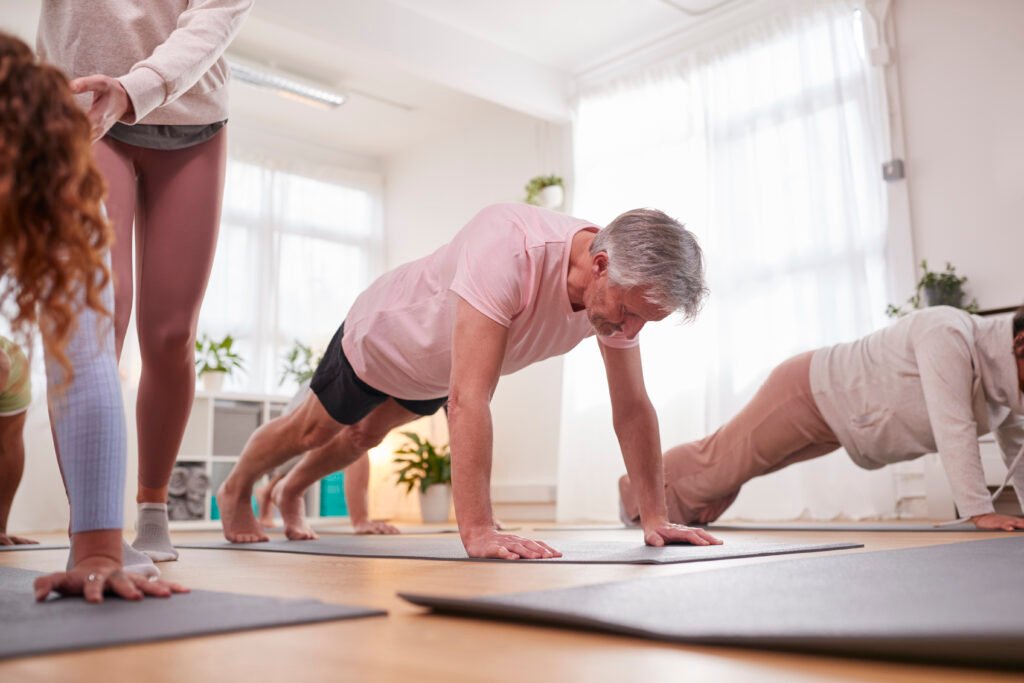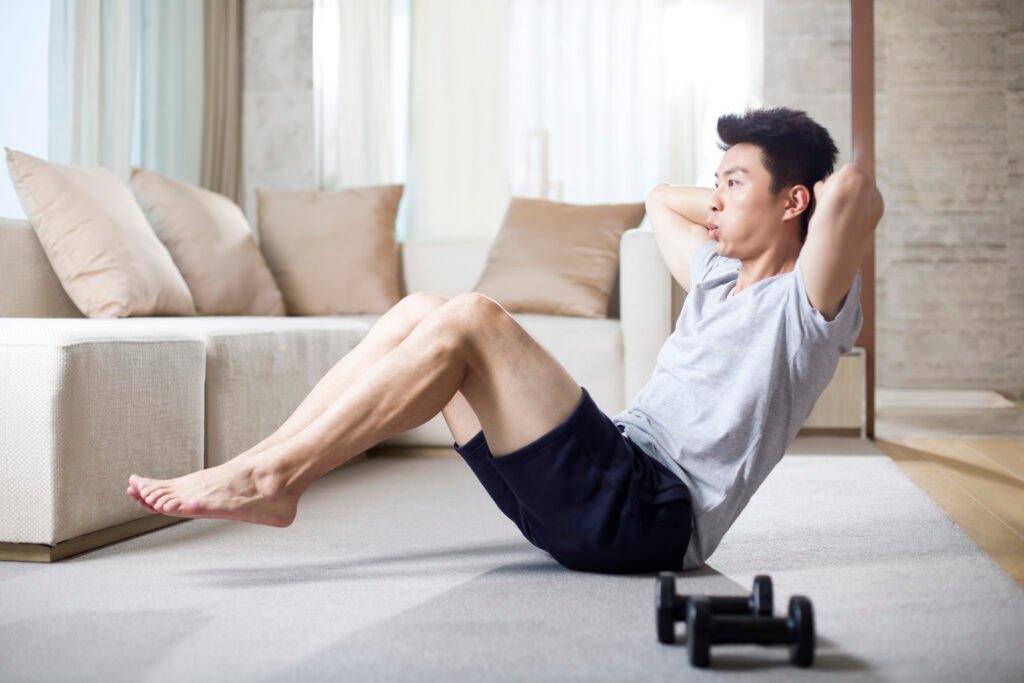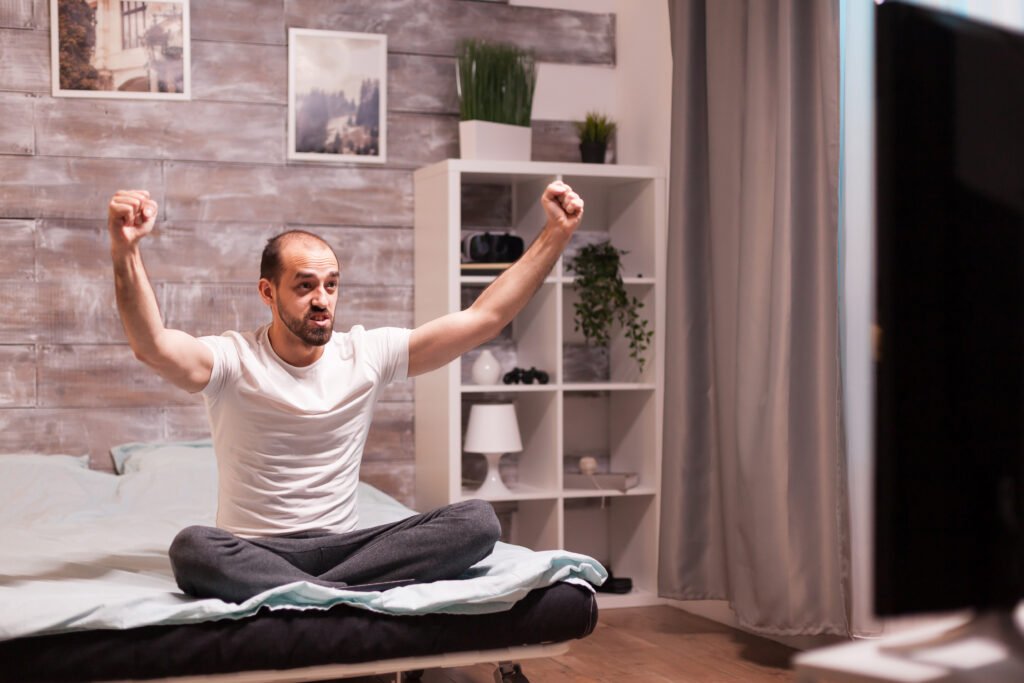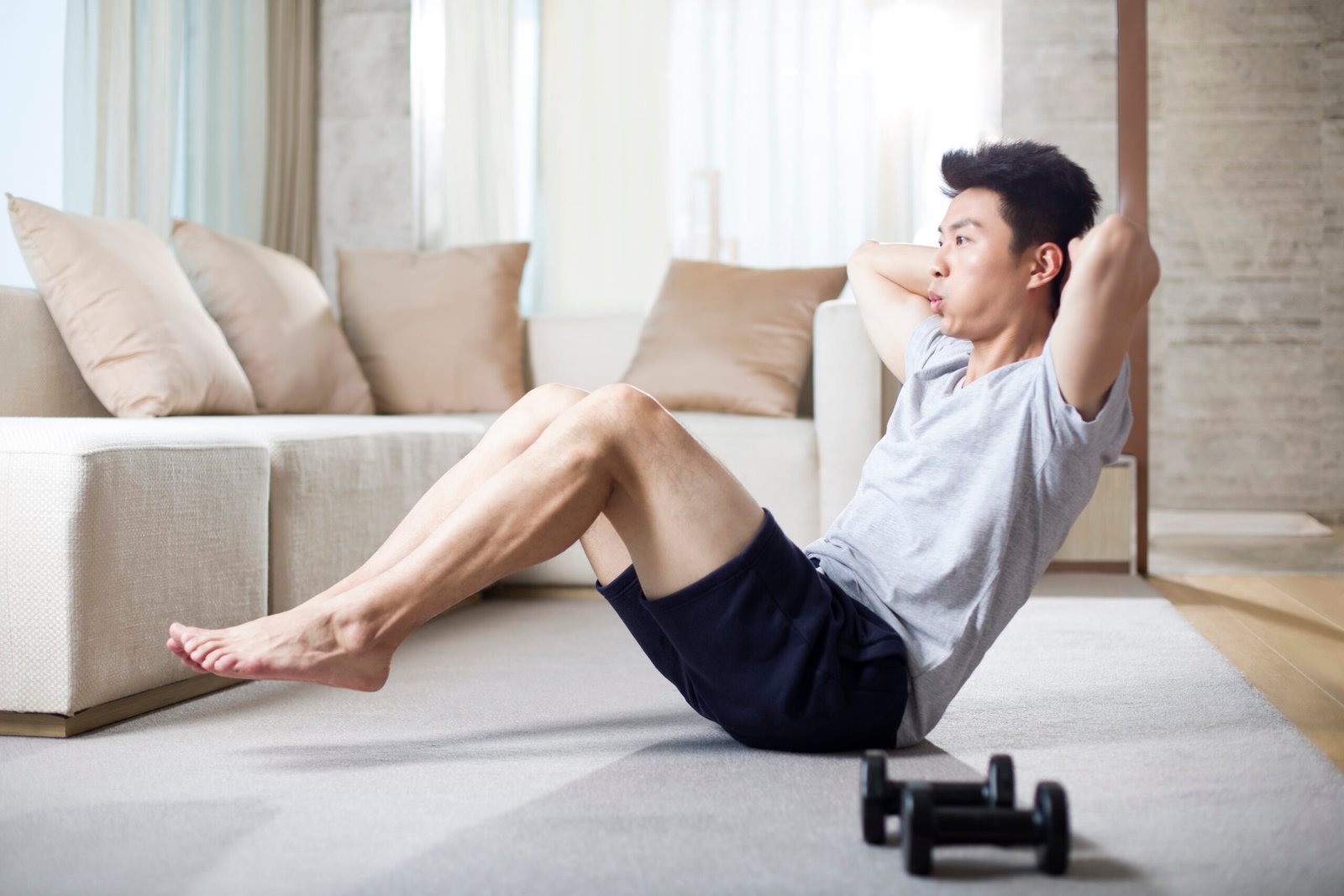Quick Summary of the Article
The article primarily focuses on home fitness exercises that can be performed without equipment, offering a variety of easy and effective exercises that can be done anywhere. Furthermore, it addresses the importance of these exercises in improving strength and physical fitness, along with tips for self-motivation and gradually increasing the difficulty of exercises over time. The article also encourages consistency and setting a workout schedule to achieve the desired results. By following these tips, everyone can benefit from home exercises and easily achieve their health goals.
Table of Contents
- Introduction
- Benefits of Exercising at Home Without Equipment
- How to Start a Home Workout Program
- Basic Exercises Without Equipment
- Squats
- Plank
- Push-ups
- Lunges
- Air Chair
- Mountain Climbers
- Tips for Motivating Yourself to Workout at Home
- How to Increase Exercise Difficulty Over Time
- The Importance of Consistency and Creating a Workout Schedule
- Conclusion: Maximizing Home Workout Benefits
- FAQs
Introduction
Physical fitness is crucial in everyone’s life. With the fast-paced lifestyle and limited time available, exercising at home without equipment has become an ideal option for many. It’s a flexible and effective way to meet daily body needs without having to travel to a gym or purchase expensive equipment. Most importantly, it’s a practical method for restoring balance between work and personal life.
If you want to improve your strength and physical fitness without leaving your home or investing in gym equipment, this article will provide you with everything you need to get started. We will offer a variety of exercises that rely solely on your body weight and are suitable for all fitness levels, whether you’re a beginner or have previous experience.

2. Benefits of Exercising at Home Without Equipment
To begin, let’s review the many benefits that come with exercising at home without equipment, which can significantly improve your fitness and overall health. Here are some benefits that might motivate you to work out at home:
- Financial Savings: One of the main advantages of exercising at home without equipment is that you won’t need to spend money on gym memberships or buying fitness devices. All you need is your body weight and some available space.
- Flexibility in Time and Location: Unlike gym memberships, you can work out at home at any time that suits you. Whether you prefer morning workouts or evening ones after work, your home becomes your personal gym.
- Variety of Exercises: You can perform a variety of exercises that target all muscle groups using just your body weight. There are strength exercises, cardio, and flexibility exercises, all of which can be done without equipment.
- Privacy: Not everyone feels comfortable exercising in front of others at a gym. At home, you can work out in a private and comfortable environment.
In addition to these benefits, home workouts will help you improve physical strength, increase flexibility, and achieve a better balance between work and life.
3. How to Start a Home Workout Program
Now that you’re aware of the benefits, you might wonder how to start a home fitness program without equipment. Don’t worry, the start is very simple and only requires a little organization and focus. Here are a few steps you can follow:
- Set a Clear Goal: The first step is to define what you want to achieve with your workout. For example, do you want to increase strength? Improve cardiovascular fitness? Or lose weight? It’s important to have a clear goal because it will help you choose the right exercises and focus on making gradual progress.
- Choose Exercises that Match Your Level: If you’re a beginner, it’s best to start with simple exercises. Then, you can gradually increase the intensity over time. Start with exercises like squats, plank, and push-ups, and increase the difficulty as you go.
- Create a Schedule: To ensure consistency, make a workout schedule. Incorporate exercises into your daily routine. Choose the days you will exercise, whether it’s three days a week or more, depending on your personal schedule.
- Warm Up and Cool Down: Don’t forget to warm up before starting your workout to avoid injury. Use stretching exercises and light cardio moves, such as jogging in place or arm circles, to prepare your body for exercise. Similarly, cool down your muscles after finishing to prevent cramps.
Once you’ve set up your plan, you’ll be ready to begin your equipment-free training program.
4. Basic Exercises Without Equipment
There are many fitness exercises that can be performed at home without equipment, targeting all the muscles of the body. Here are some basic exercises:
. Squats (Squats)
Squats are one of the most effective exercises to strengthen the lower body muscles, especially the thighs and glutes. It’s a bodyweight exercise that enhances overall strength and balance. To perform squats:
- Stand upright with your feet shoulder-width apart.
- Lower your body as if sitting on an imaginary chair, making sure your back is straight and your knees don’t extend beyond your toes.
- Return to the starting position and repeat.
Tip: Keep your back straight and focus on using your thigh and glute muscles as you lower and rise.
. Plank (Plank)
The plank is an effective exercise for strengthening the abs, back, and shoulders. It also improves endurance and stability. To do the plank:
- Lie on your stomach, then lift your body using your elbows and toes.
- Keep your body in a straight line, making sure your back and hips don’t sag.
- Hold this position for as long as you can.
Tip: Start with a short duration, like 20 seconds, and increase it gradually over time.

. Push-ups (Push-ups)
Push-ups are a classic exercise that targets the chest, shoulders, and arms. You can perform this exercise on the floor without any equipment. To do push-ups:
- Place your hands on the floor, shoulder-width apart, and support yourself on your toes.
- Lower your body toward the floor until your chest is almost touching it.
- Push yourself back up and repeat.
Tip: If you’re a beginner, you can perform push-ups with your knees on the ground to lighten the load.

. Lunges (Lunges)
Lunges are another great exercise for strengthening the thighs and glutes, as well as improving balance and coordination. To do lunges:
- Stand upright and take a large step forward with one leg.
- Lower your body until your knees form a 90-degree angle, then return to standing.
- Repeat with the other leg.
Tip: Keep your back straight while performing the exercise to avoid injury.

. Air Chair (Air Chair)
The air chair focuses on strengthening the thighs and glutes. It’s a static exercise that requires high endurance. To do it:
- Stand with your back against the wall.
- Slowly slide down until you’re in a sitting position, as if you were sitting on an invisible chair.
- Hold this position for as long as you can.
This cardio exercise is great for improving cardiovascular fitness and activating both upper and lower body muscles. To do this exercise:
- Start in a push-up position.
- Bring your right knee toward your chest quickly, then alternate between legs as if climbing a mountain.

5. Tips for Motivating Yourself to Exercise at Home
Maintaining motivation to continue with home workouts can be challenging, especially when there’s no routine or trainer supervision. However, you can adopt strategies to keep you motivated and help you reach your health goals:
- Set Realistic Goals: Start by setting small, achievable goals, like increasing repetitions or workout duration week by week. Achieving these goals will build your confidence and increase your motivation to continue.
- Vary Your Exercises: Keep yourself motivated by varying your exercises. Instead of repeating the same exercises every day, try incorporating new exercises to avoid boredom and increase the challenge.
- Use Motivational Music: Listening to motivational music during workouts can boost your energy and make you feel more motivated to exercise longer. Choose a playlist full of upbeat songs that give you positive energy and encourage peak performance.
- Fixed Schedule: Set a specific time for exercise every day or week and make it a part of your daily routine. When you stick to a schedule, exercise becomes an easy habit to adopt, ensuring consistency.
- Join Online Groups: Even if you’re working out at home, you can join online support groups or fitness challenges. Sharing your experience and watching others’ progress can keep you motivated to stay on track.
- Celebrate Your Achievements: After reaching each small goal, celebrate your accomplishment. This could be as simple as giving yourself an extra rest day or taking time to relax. Don’t hesitate to appreciate your efforts and successes, no matter how small.
6. How to Increase the Difficulty of Exercises Over Time
The challenge in home workouts is figuring out how to make them more difficult over time to stimulate muscle growth. Here are several ways to increase exercise difficulty without additional equipment:
- Increase Repetitions and Sets: A common way to increase difficulty is by raising the number of repetitions per exercise. For example, if you’re doing 10 push-ups, gradually increase it to 15 or 20. This change helps build endurance.
- Reduce Rest Periods: Reducing rest time between exercises or sets increases the cardiovascular challenge, making your muscles work harder for a longer time, which improves overall fitness.
- Slow Down the Exercise: Performing exercises more slowly increases the time muscles are under tension. This added tension leads to greater muscle endurance and strength. Try doing squats or planks slowly for an added challenge.
- Add Compound Movements: Compound movements that target multiple muscle groups at once increase the difficulty of the exercise. For instance, combine squats with jumps or lunges with overhead arm raises to add another level of challenge.
- Use Your Body Weight Differently: Finally, you can change the angles of the exercises or use different parts of your body to make them more challenging. Try performing push-ups with one hand or doing side planks, as these variations introduce extra difficulty.
7. The Importance of Consistency and Scheduling Workouts
The key to achieving results is consistency. Creating a workout schedule and sticking to it will help you stay motivated and improve your performance. Consistency also leads to progress in endurance, strength, and overall physical fitness.
It’s recommended to exercise at least 3-4 times per week, depending on your goals and fitness level. Even if you don’t feel like working out on some days, remember that consistency will bring long-term results.

8. Conclusion: Maximizing Home Workout Benefit
Home exercises without equipment offer a simple, affordable, and effective way to maintain or improve your fitness levels. By incorporating a variety of exercises into your routine and staying motivated, you can achieve your fitness goals and build a healthy lifestyle.
9. Frequently Asked Questions
- Can I achieve good results from home workouts without equipment?Yes, you can achieve excellent results from home workouts without equipment if the exercises are done correctly and consistently. These workouts rely on your body weight to strengthen muscles and improve fitness.
- How often should I work out at home per week?It’s recommended to do home workouts 3 to 5 times a week for the best results. You can start with a few sessions and gradually increase them.
- How can I increase the difficulty of exercises over time?You can increase the difficulty of exercises by increasing repetitions, reducing rest periods between sets, or performing the exercises slowly to increase the challenge on your muscles.
- Should I use equipment in the future to improve my results?While bodyweight exercises can provide great results, adding light weights or resistance may enhance your progress over time.

